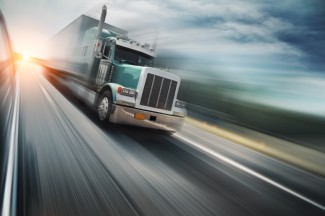Heavy-duty pickups and vans have annual sales of more than 700,000 units and consume about 400,000 barrels of oil per day. The first US fuel efficiency and GHG emissions standards (Phase 1) for heavy-duty vehicles, adopted in 2011, will yield a 12% reduction in fuel consumption, on average, for heavy-duty pickups and vans by 2018. These vehicles are similar to their light-duty counterparts in design, technology, and work functions, but have higher payload capacity (gross vehicle weight rating above 8,500 lbs.) At present, the gap between fuel economy requirements for light-duty and heavy-duty pickups and vans is considerably higher than can be explained by differences in vehicle weight and payload. The Environmental Protection Agency and the Department of Transportation are now working on Phase 2 of the program, a major element of the president’s climate action plan. It offers an opportunity to narrow the efficiency gap between light-duty and heavy-duty vehicles and deliver major savings at the pump to buyers of heavy-duty pickups and vans. ACEEE’s new research report Fuel Efficiency and Greenhouse Gas Emissions for Heavy-Duty Pickups and Vans: Phase 2 assesses the technologies available to reduce fuel consumption in these vehicles.
Our assessment of technologies draws from the agencies’ analyses, a 2010 National Academy of Sciences report, and recent work from the Southwest Research Institute. The figure below summarizes the opportunities we found for fuel consumption reduction in gasoline- and diesel-powered vehicles, relative to a typical 2010 vehicle.
Phase 1 and Phase 2 standards together could reduce the fuel consumption of gasoline pickups and vans by 31%, and of diesel pickups and vans by 28%, relative to 2010 levels. Given the agencies’ projections of savings from the first phase, this means that Phase 2 could reduce fuel consumption by 23% and 15% beyond Phase 1 levels in gasoline and diesel vehicles, respectively. Our calculations assume different penetration rates for individual technologies, depending on their applicability and market, and adjustments to reflect overlap in the technologies’ effectiveness.
Along with greater stringency, the Phase 2 rulemaking should make other improvements to the program. Vehicles’ fuel efficiency targets under the program vary with “work factor,” a parameter that reflects payload capacity, towing capacity, and four-wheel drive capability. Work factor should be defined based on a vehicle’s demonstrated capabilities and should adequately capture the relationship between the vehicle’s utility and its fuel consumption, both for gasoline and for diesel vehicles. New heavy-duty pickups and vans should display a fuel economy window sticker, similar to the one for light-duty vehicles, so that buyers can compare vehicles’ fuel efficiency, along with other performance features, both within and across classes.
The agencies’ proposal for the Phase 2 program is expected later this month or in June.





